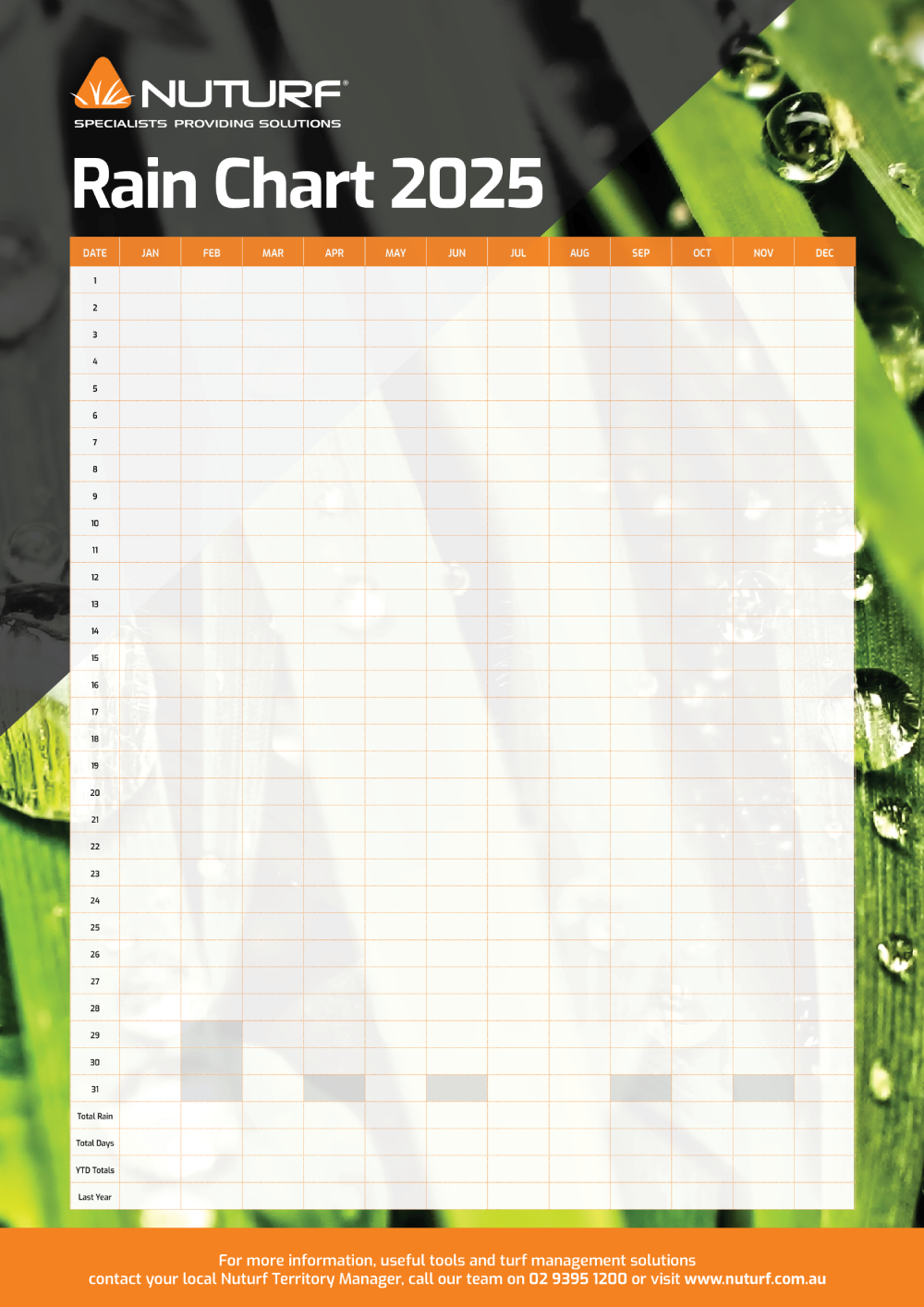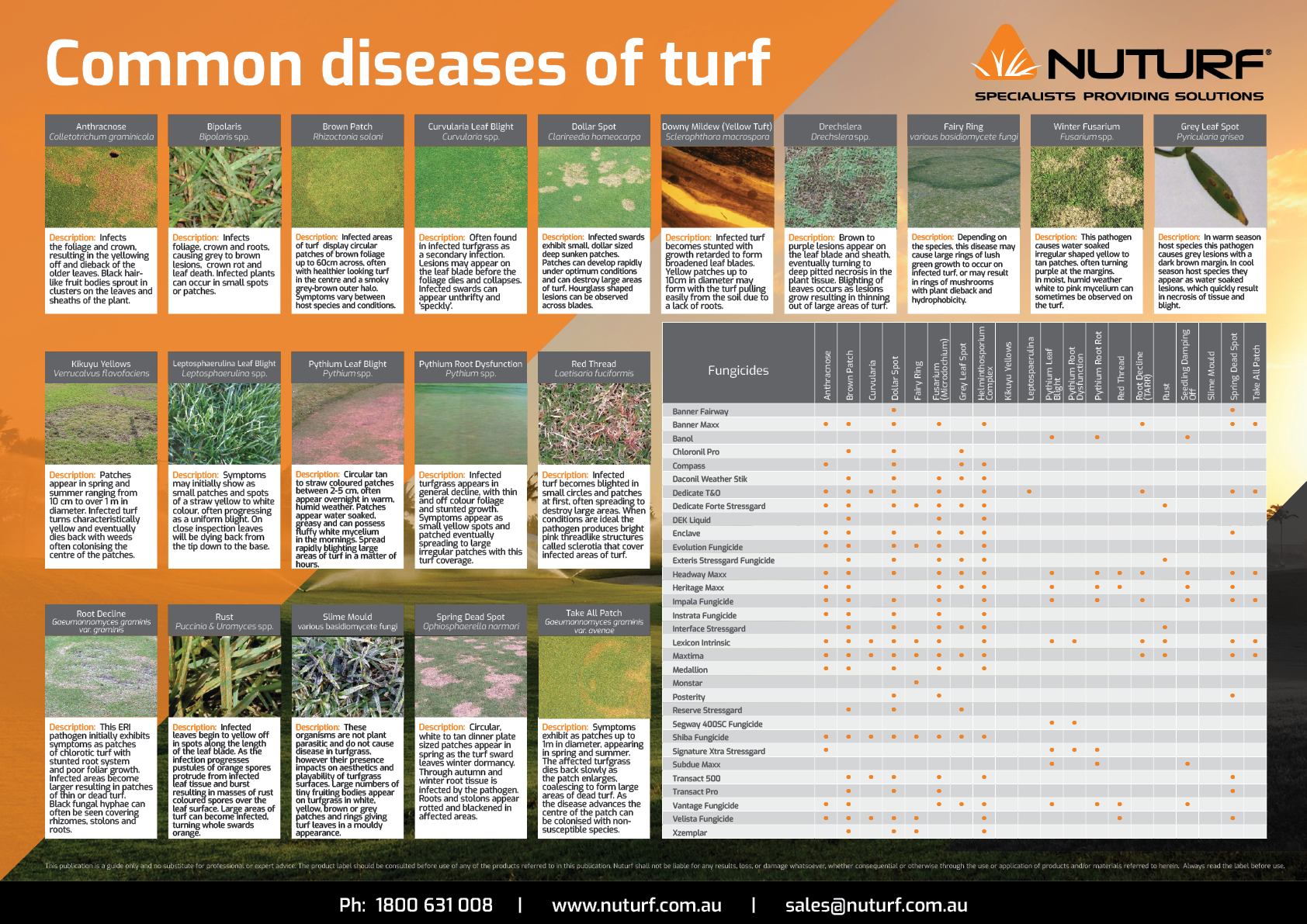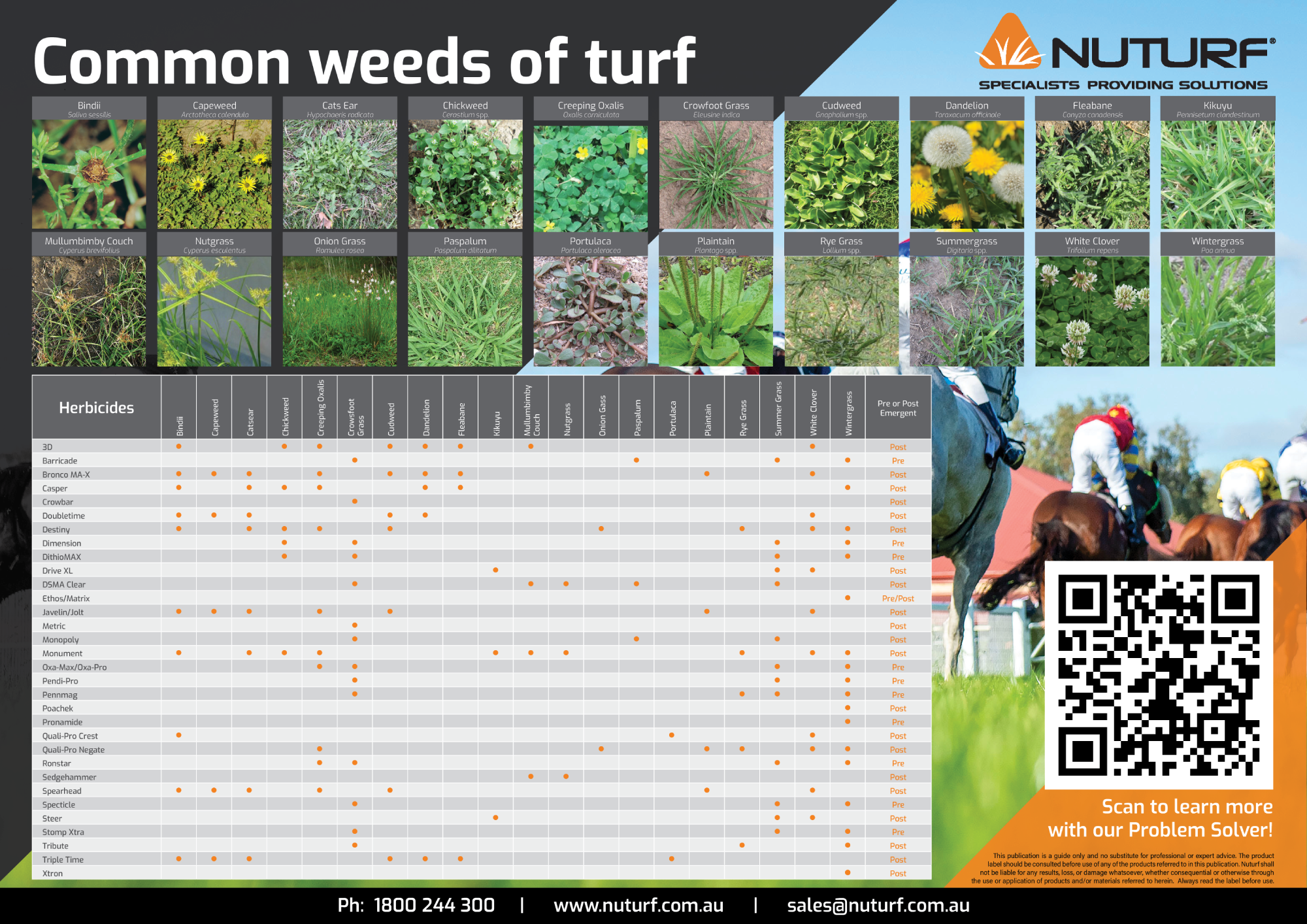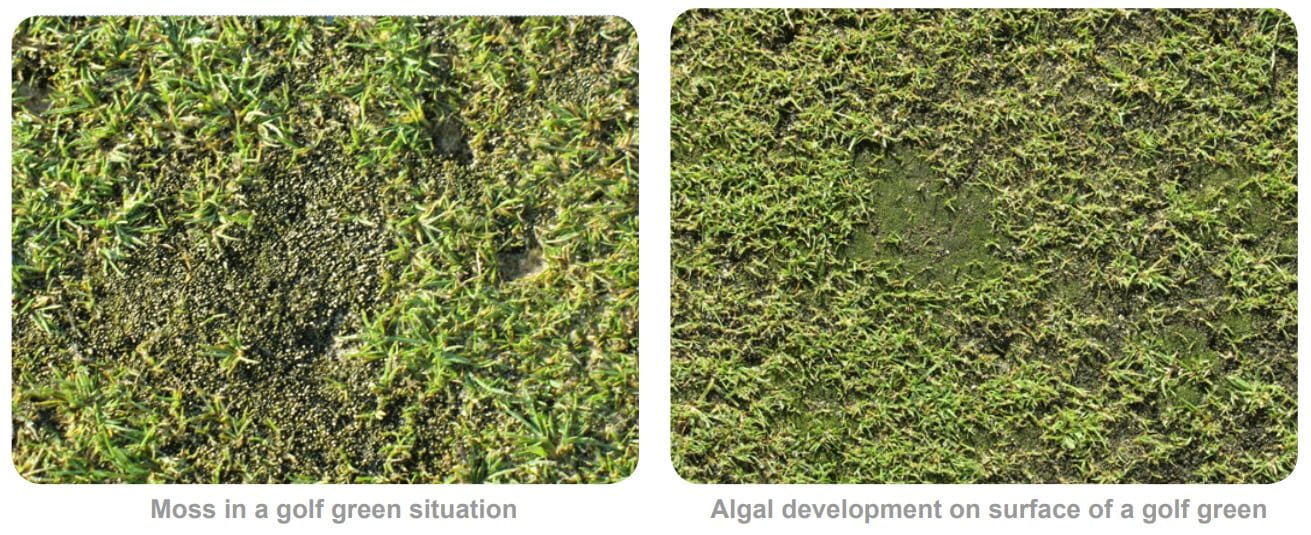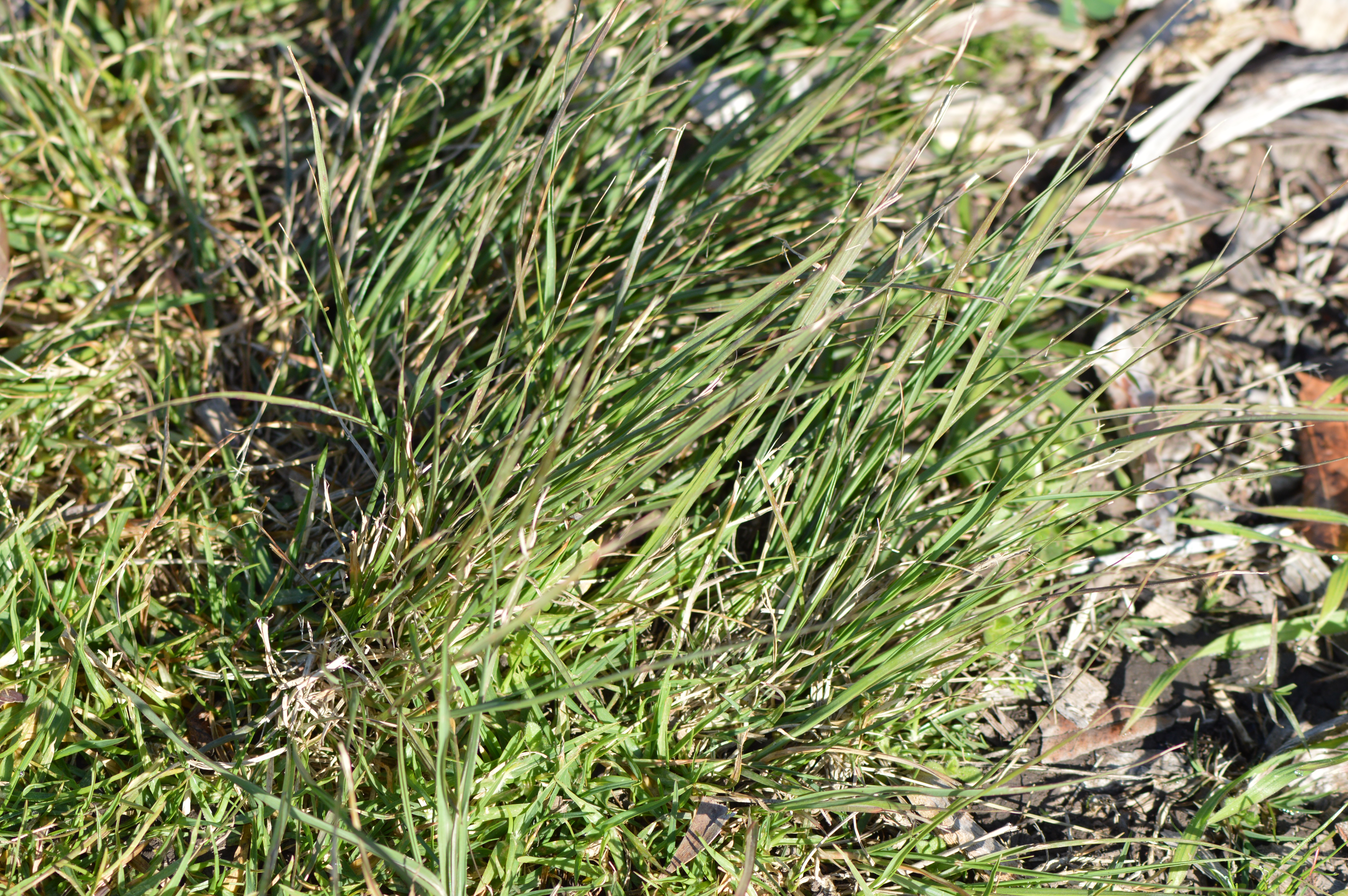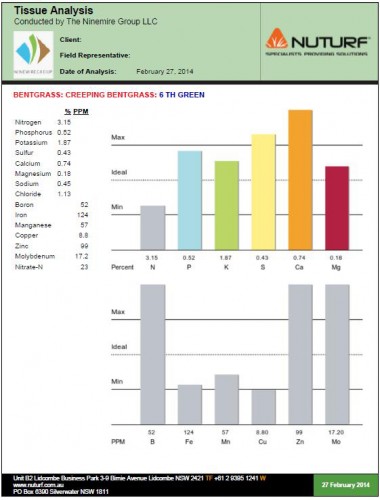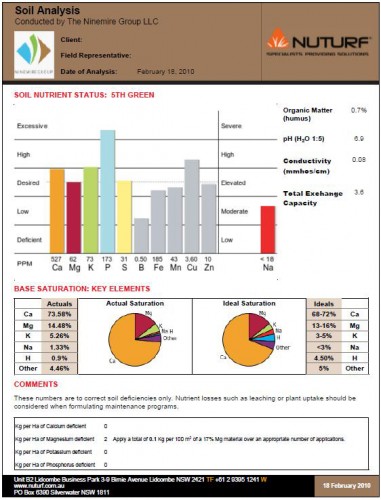Fungicides: What Do The Mobility Types Mean?
Fungicides: What do the mobility types mean?
In order to get the most out of your turf fungicides, it is important to understand the some specific characteristics each may have, including phytomobility and activity groupings (mode of action). Understanding these classifications will help you choose the right turf products for curative treatments and the right combination of products for a preventative program.

What does the "phytomobility" of fungicides mean?
Phytomobility refers to the potential movement of a fungicide within or on plant tissue. Most products fall under either a contact or systemic mobility type.
Contact
Contact (or protectant) fungicides adhere to the plant surface and do not enter the plant at all. Therefore they act as a chemical barrier that prevents spore germination and only have activity on the external fungal structures that they have physical contact with after application.
The length at which these products are effective is governed by their ability to remain on the plant surface. Contact fungicides are most suited for preventative/protectant applications, as they are unable to remove fungal structures within internal parts of the plant.
Examples of contact fungicides are those with actives such as mancozeb and clorothalonil, which have been used for many years and are regarded as important components of a fungicide program. This is because they have multiple modes of action and are essential for reducing the risk of fungal resistance. To ensure the effectiveness of contact products, technology is sometimes included in the formulation to prolong residual activity in the plant body.
Systemic
These fungicides are applied to the plant surface and are absorbed through the wax cuticle into underlying tissue. They do this by moving (often through a membrane) from an area of high concentration of active to areas of lower concentration, to reach equilibrium in both areas. A systemic product will travel through the vascular system moving to other areas within plant tissue.
Systemic fungicides can be further classified into 3 groups:
- Locally Systemic (Translaminar) – These fungicides are absorbed by the leaf and only move a short distance within the plant tissue, for example through the cuticle between cells to the opposite side of the leaf. Most of the active remains around the surface of the plant and does not usually travel very far within the tissue, hence the term locally systemic. However some active will diffuse through the wax cuticle and epidermis, entering the mesophyll underneath - this is known as translaminar movement.
These products are often very useful as curative fungicides as they control fungal growth on the surface of the plant tissue, as well as having activity on fungal structures inside the plant. Iprodione is a perfect example of this phytomobility, and due to the nature of the product it can be very effective against fungi such as Rhizoctonia salani (Brown Patch). - Acropetal (Xylem Mobile) – These actives make their way to the xylem of the plant, where they can move upwards (acropetally). Acropetal fungicides are among the most common systemic fungicides available, and often require irrigation following application to position the product in the root system. Examples include azoxystrobin, fluxapyroxad, and propicanazole.
- Systemic (Ambimobile) – Some actives are truly systemic and so can move through upwards through xylem and downwards through phloem; this is known as basipetal movement. The result of this is that the whole plant becomes protected from root tips to leaf tips.
These truly systemic products are few and far between, with only one active (fosetyl aluminium) being commonly used in turfgrass. This unique method of movement within the plant often results in an extremely effective method of plant protection, in the case of fosetyl-Al, against Pythium spp. This allows flexibility in application offering the turf manager option of whether or not they irrigate afterwards.
Activity Groupings (Mode of Action)
Understanding the active constituents’ activity on the target pathogen puts the user in a position to be able to manage pathogen resistance. It is always important to read product labels prior to use, as they will generally offer a guideline for usage patterns to help avoid resistance building. Resistance occurs when products with the same (or similar) activity groupings have been applied to a target organism over a period of time. To prevent resistance from occurring products of different activity groupings must be rotated. This ensures that any genetic trait that has allowed target organisms to survive the previous application will now be controlled with the application of a different product.
In the Croplife Resistance Management Strategy it is recommended that no more than two consecutive sprays of a fungicides from the same activity group should be applied (other than Group 14, 28, M2, M3, M4 or M5), unless mixed with a protectant fungicide from Group 14, 28, M2, M3, M4 or M5.
Combining all of this knowledge with Nuturf’s Disease Diagnosis services, a turf manager can know exactly where to position fungicide applications in the turf plant, and exactly which combination of products they should be using to gain the best possible control.


